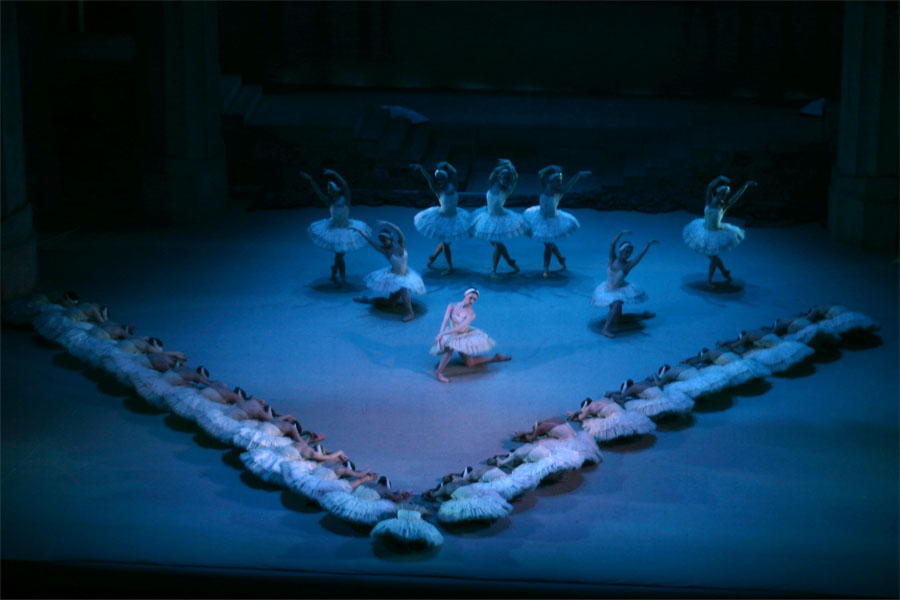The Collective Action of Swan Maidens
Last month I sat through five productions of Swan Lake, five days in a row. Despite a lifetime of ballet—and having danced the role of a swan in the ballet’s second act—I was hazy on the story’s ending. As perhaps I should be, as I’ve found evidence of nine different endings to the ballet. While my bones still held the choreography, I couldn’t recall the fate of the swans. So I sat through the ballet a tabula rasa and discovered a wildly feminist tale.
Most narrative ballets originated in the 19th century, drawing from fairy tales charted along traditional gender roles and boundaries. Men saving women, women serving men. The history of ballet is a history of men creating on and creating for the bodies of women; the tales’ narrative sexism received no reprieve as the stories were translated into ballets.
The origins of Swan Lake’s plot are unclear, but both a German story, “The Stolen Veil” by Johann Karl August Musäus, and a Russian folktale, “The White Duck” are said to have given life to Tchaikovsky’s tale. On stage, we meet Prince Siegfriend, whose mother demands that he find a bride. Uneasy about the idea of settling down, the Prince heads out for a swan hunt, where he meets the love of his life, Odette. Yes, a swan. Or rather, a woman cursed to swan-hood during daytimes, a captive of Von Rothbart. Odette is one of twenty-four women imprisoned by Von Rothbart, part-owl, part-sorcerer, a man of unclear motives.
Eight terms of venery—collective nouns which emerged for hunting purposes—exist for swans: bank, bevy, drift, eyrar, flight, game, herd, lamentation, sownder, team, wedge, and whiting. The second act of Swan Lake showcases this collective. While Odette and Prince Siegfried perform their pas de deux, the swans stand sentry, a line flanking each side of the stage, forming a barrier to protect the lovers from Von Rothbart’s gaze.
In most productions, Odette and Siegfried’s tale ends tragically. The swan leaps from a cliff, and the Prince follows. As one, and as lovers, they could not defeat Von Rothbart’s spell. But as the lovers’ story comes to an end, the bevy of swans remains on stage, dancing in defiance of Von Rothbart. He has taken one of their own, and they will not rest. The lamentation flaps around Von Rothbart, encircling him. As Tchaikovsky’s score builds, the flight assembles. The arms of the swan maidens glide up and down, forty-eight wings flapping, casting Von Rothbart out of the kingdom.
Twenty-four swans remain, gliding into the sunrise. The swan maidens, collectively, have driven their captor from the kingdom. Together, they have accomplished what their Queen alone could not. Together, they have accomplished what a man could not accomplish for them. As Tchaikovsky’s ballet builds into a final crescendo, the audience is left with the eyrar, the whiting, the herd—the women who have saved themselves.
Swan Lake opens with a Prince’s quest. A man seeks a woman. But by the end of the ballet, choreographically speaking, this man’s desire becomes an afterthought. The fourth act of Swan Lake culminates with a women-led overthrow of an authoritarian regime, with the collective action of swan maidens.




